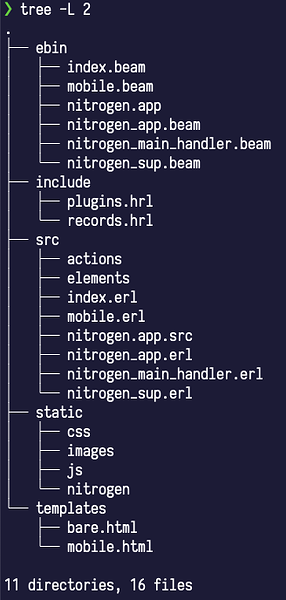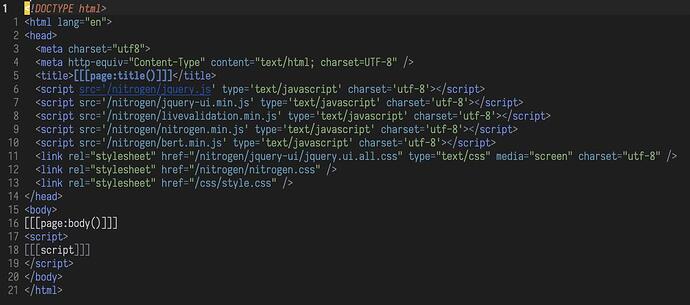Maartz
Build It With Nitrogen Book Club
The very first time I’ve seen a line of Elixir I was in awe. Coming from Ruby the syntax was familiar.
But I wanted to know what was this “Erlang” beast, scaring so many people.
Erlang’s syntax was in fact not so “atrocious” and even quite nice.
And after watching this talk from Todd Resudek, I was convinced that to better appreciate the BEAM ecosystem, you need to grasp Erlang.
And so I’ve bought this book, it’s pretty thick but, I’m very eager to read how they dealt with all HTML, forms, string, etc. that the web represents.
I’ll use this book club to tell you how’s the journey and what are my thoughts about it.
Most Liked
OvermindDL1
The Nitrogen library is so fun. ^.^
Maartz
Chapter 1 - Frying Pan to Fire
I really like the way the book is written. It’s like a story. It’s very different from all the other books of the same category.
Installing Nitrogen is not like installing rails nor phoenix, you need to clone the nitrogen repo under nitrogen/nitrogen.
After that, by cd into the nitrogen folder, it will generate a fresh new app with make.
make rel_inets PROJECT=devtalk
By inspecting the Makefile I can see that you’re not forced to use one specific web server like Erlang’s basic one.
You can choose between – all with different versions like slim:
- Cowboy
- Inets
- Mochiweb
- Webmachine
- Yaws
To be honest I only knew the existence of Cowboy and Inets. Probably gonna check the others.
By cd into devtalk and running bin/nitrogen console the server starts running on 8080.
The code which interests me is under the site folder.
By crack opening the templates/bare.html as suggested by the book, I can see this:
It seems to be the Nitrogen’s “secret sauce”. Like sharding for MongoDB web-scale…
I really like the little notes like this one:
Most of the Erlang community prefers Emacs,
but the authors are oddballs and prefer Vim.
I agree a 100 percent ![]()
It’s important to note that since Nitrogen 3, it uses Rebar3.
Also that ViM and Emacs got an extension to handle a special indentation for Nitrogen.
It goes from this:
Elements = #panel { body=[
#span { text="Hello, World"}
]},
to this:
Elements = #panel {body=[
#span{text="Hello, World!"}
]},
Which is in fact probably quite helpful in a big file.
The syntax reminds me of Elm, and its special way to define HTML in this style.
This first chapter is a little ice breaker, nothing too technical, but it lays the foundation of the book. I kinda like it.
Popular Community topics

Other popular topics

Categories:
Sub Categories:
Popular Portals
- /elixir
- /rust
- /ruby
- /wasm
- /erlang
- /phoenix
- /keyboards
- /python
- /js
- /rails
- /security
- /go
- /swift
- /vim
- /clojure
- /emacs
- /haskell
- /java
- /svelte
- /onivim
- /typescript
- /kotlin
- /c-plus-plus
- /crystal
- /tailwind
- /react
- /gleam
- /ocaml
- /flutter
- /elm
- /vscode
- /ash
- /html
- /opensuse
- /zig
- /centos
- /deepseek
- /php
- /scala
- /lisp
- /react-native
- /textmate
- /sublime-text
- /nixos
- /debian
- /agda
- /django
- /kubuntu
- /deno
- /arch-linux
- /nodejs
- /revery
- /ubuntu
- /manjaro
- /spring
- /lua
- /diversity
- /markdown
- /julia
- /slackware












